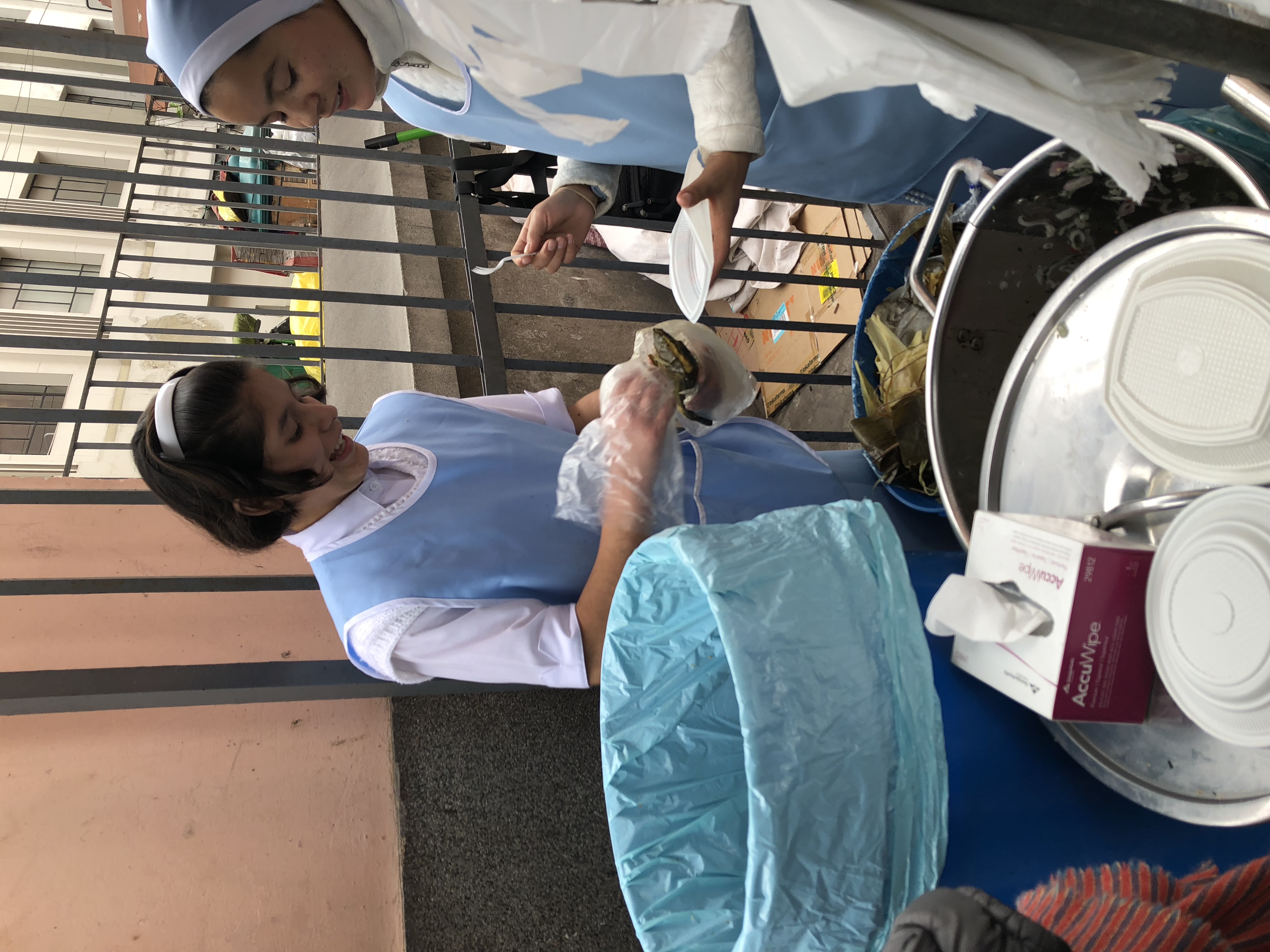
c/o Walker Brandt
Eating is a pathway to newfound vulnerability and learning about new traditions. The pace of eating can be informed by the quality of light: fluorescent lights always instill some form of urgency in me, reminding me of my middle school cafeteria, while low lighting may inspire a sensual element to the meal which often slows me down as I take in each bite. What I find the most fascinating about eating is observing the variables that surround the meal—how the story and experience is only partially inspired by the food itself.
Growing up, my dad would leverage each family meal as a chance to expand my palate. My favorite recipe, to his surprise, is a balsamic vinaigrette he’d pour over a chunk of Romaine lettuce. This handheld salad allowed me to sit on the fire escape with my brother or run into the living room to check in with my mom. The cool crunch of the lettuce paired with the sharp bite of the balsamic became so much more visceral as I traversed around our loft.
My paternal grandparents had always remained distant figures, as I only had limited FaceTimes with them before they passed away. More than anything, food became a therapeutic gateway for my father to reminisce over the better memories of his childhood. Those stories are something I hold onto, and the dishes have become relics to connect me to my ancestry. My grandmother, Pricilla, was raised Christian and met the wrath of my Jewish great-grandmother until she converted. My dad would always laugh about the respectful twists to traditional Jewish recipes my grandmother would include. I’d like to think that Pricilla did this as a subtle jab at the rigid context she acclimated to.
My roots in New York have also contributed to my love of food, supporting my everlasting search for transporting experiences in my everyday life. A favorite of mine are the mustard chicken dumplings at the Russian and Turkish baths on East 10th Street, where the slight clearing of the sinuses from the spice parallels the eucalyptus steam rising from the basement sauna below.
I spent most of my high school years wandering around the Lower East Side, an area populated with conveyor belts of Cuban food or grab-and-go Chinese restaurants. Afternoons with friends became an iterative meal where I would start with a bacon, egg, and cheese from a neighboring deli, grab tamales from La Aila cafe, and end with a black and white cookie from Moishe’s Kosher Bakery. I like to think that the New Yorker in me loves a meal filled with transitions and movement. These waypoints in our culinary journey feature varying languages and details down to the very dishware that made me cherish these micro eating experiences.
When traveling, food has always been the primary conduit between myself and the local culture. Walking the cobblestone streets of Lima with my dad and making an exchange with two nuns for a chicken tamale offered a momentary glance into Peruvian culture. I remember this making me especially mindful as I bit into the hand-held meal, deepening my appreciation of its flavor profile. Food is what facilitated this brief encounter that contained money, a light-hearted joke, and an impromptu photograph.
Eating creates a sacred, carved out time to check in with your body and mind. It provides an opportunity for deep exhalation. This past year, I’ve learned to approach these momentary breaks with calmness rather than solely a spirit of exploration. Silent eating has re-inspired a nostalgic sensitivity towards texture, smell, and form. Whether it is in my family kitchen or on the streets of Lima, tasting with intention is about finding a balance between the internal culinary experience and the culture that has informed it.
Walker Brandt can be reached at wbrandt@wesleyan.edu
1 Comment
Allene Smith
What a delightful exploration into the rich tapestry of experiences woven through the act of eating! Your article beautifully captures the essence of food as more than just sustenance but as a vessel for cultural exchange, family bonds, and personal introspection.
It’s heartwarming to read about the therapeutic role food plays in connecting with your father’s cherished memories and ancestral roots. The subtle twists to traditional Jewish recipes by your grandmother, perhaps a playful rebellion against convention, add a charming layer to the narrative.
Your connection between your New York roots and the perpetual quest for transporting experiences through food is both relatable and intriguing. The anecdote of exchanging a chicken tamale with nuns on the cobblestone streets of Lima vividly illustrates how food becomes a bridge to understanding different cultures.
I particularly resonate with your perspective on eating as a sacred time for introspection and mindfulness. In the hustle of everyday life, these moments of silent, deliberate eating serve as a reminder to appreciate the textures, smells, and forms that make each dish a unique journey in itself.
And speaking of journeys, it seems your culinary adventures have a delightful connection to kosher holidays, enriching your experiences with a unique blend of tradition and exploration. This integration of your love for food with the celebration of kosher holidays adds a distinctive flavor to your narrative, enhancing the cultural significance of your culinary explorations.
In a world that sometimes rushes through meals, your article encourages readers to savor not just the flavors on the plate but the stories, memories, and connections that come with each bite. Truly, your writing invites us to embark on a sensory journey, where food becomes a portal to both the past and the diverse cultures that enrich our present.